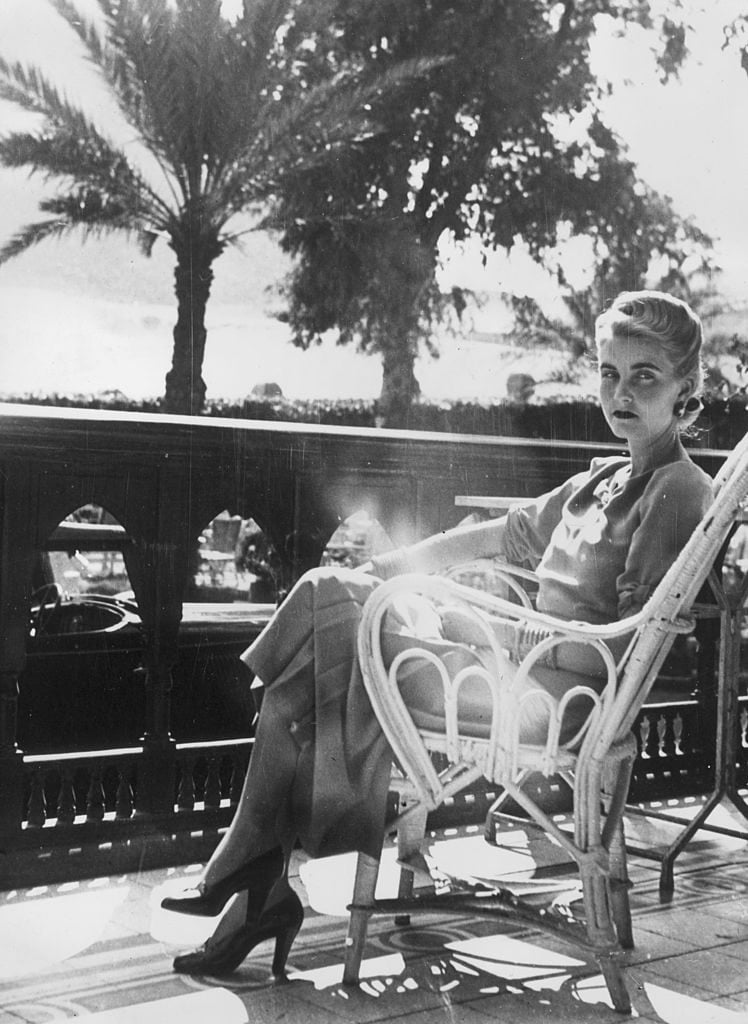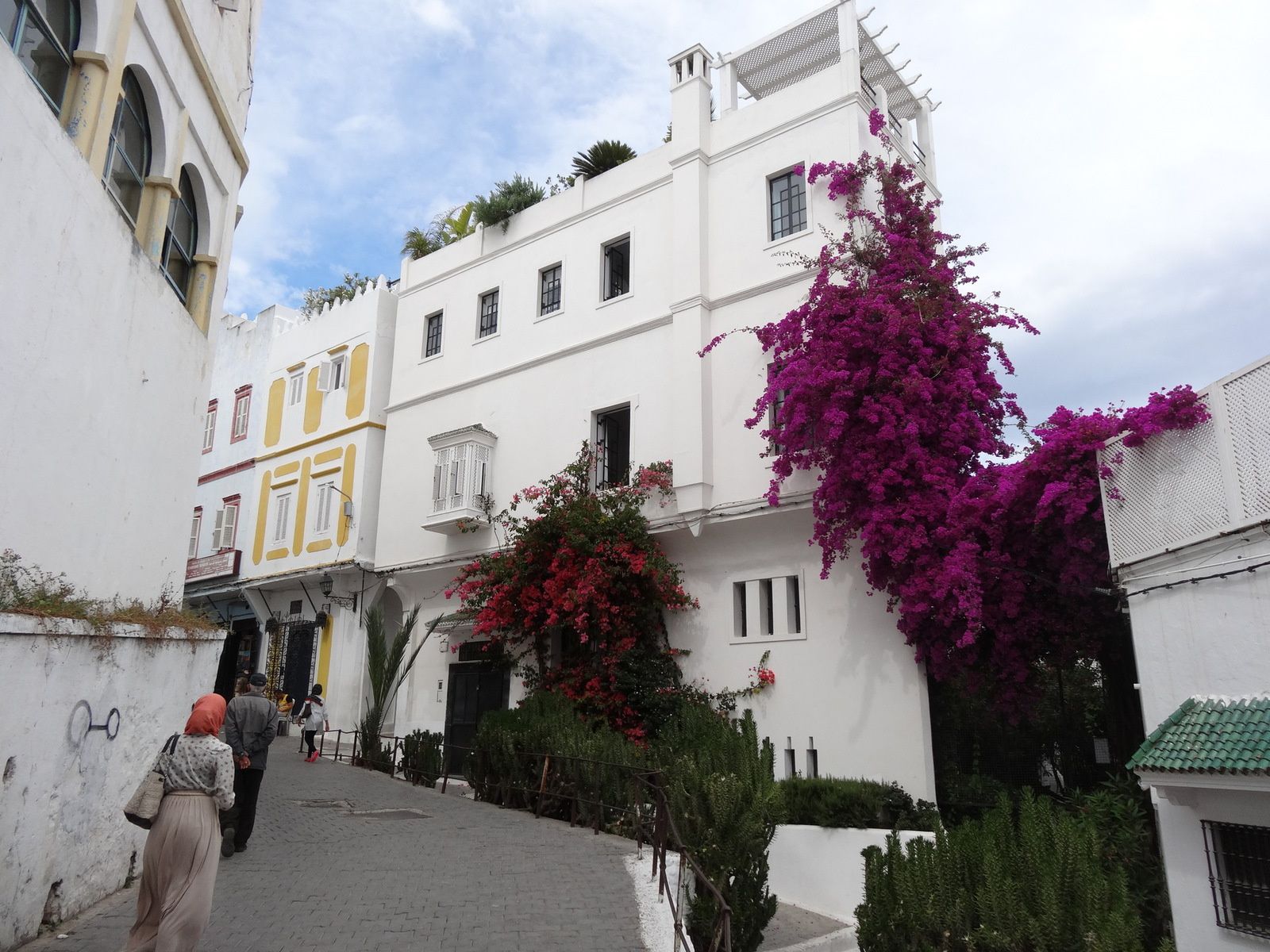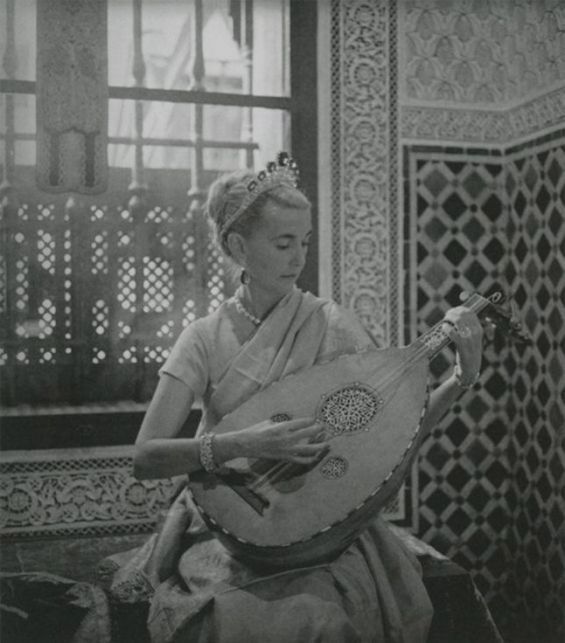American debutante, socialite and heiress Barbara Woolworth Hutton was Tangier’s «Great Gatsby», throwing lavish parties to forget about her failing marriages and sad everyday life. The «Poor Little Rich Girl», was an expatriate in Morocco during the 40s. In the northern city that was enjoying an international status, the New Yorker bought herself a magnificent palace that matched her extravagant lifestyle.
Everybody knew Barbara as the rich girl who led an unfortunate life. Daughter of retail tycoon Frank Winfield Woolworth, Hutton was the wealthiest unhappy girl out there. «All the unhappiness in my life has been caused by men», she revealed once, says the New York Times in a 1979 article.
The Queen of Tangier
Barbara’s untiring search for happiness led her to Tangier, after her third dramatic divorce, where she put money into a 15-room house. In 1946, «Hutton purchased a stone palace inside the Casbah, the fortress that stands within the walls of the old Arab quarter known as the Medina», wrote Canadian author Victoria Brooks in her book «Literary Trips : Following in the Footsteps of Fame, Volume 1», (GreatestEscapes.com Pub, 2000).

Barbara took refuge in Tangier, where she exposed her fame and fortune. And just like Francis Scott Fitzgerald’s Gatsby, Barbara Hutton «threw parties featuring camels, snake charmers, belly dancers, and 'blue men' brought in from Morocco’s Hugh Atlas Mountains», recalled Brooks.
In her ornate receptions, the «Poor Little Rich Girl» did everything to impress her guests who were most of the time other American and European expatriates.
Barbara entered her parties «like a nomad queen in a Hollywood extravaganza, wearing glittering Moroccan Caftans while seated on a throne», reported Brooks in her book. Hutton’s soirées gained so much notoriety in Tangier that when she was depressed and not in the mood to party, her guests felt disappointed, looking for «pleasure elsewhere».
A sad sad situation
However, Barbara’s unlimited expenses hid her multiple misfortunes. Her sicknesses, bad luck in love and mother’s suicide that torn her life apart wrecked her from the inside. «Barbara was so weak from reducing and pills she had to be carried throughout the streets of the Medina when she left her palace», explained the Canadian writer.

American writer and Tangier’s most known expatriate Paul Bowls, who had the chance to meet Barbara, described her life in Tangier as messy. «He was not impressed with her dramatic life and preferred to distance himself from the decadent fray», says Brooks.
Indeed, her Tangier life was as disastrous as her relationships. While in Morocco, Barbara was out of control, as reported by Scottish writer and journalist Ian Fintayson.
In his book «Tangier : City of The Dream», (I.B. Tauris, January, 2015), Fintayson says that Barbara’s lawyer «Graham Mattisson, had already become seriously alarmed about her level of expenditure, and had taken control of her chequebook».

But, the «Poor Little Rich Girl» was too sad to care about her expenses. According to Fintayson’s account, Hutton «gave a gold and pearl necklace which she claimed had once belonged to the Empress of Japan» to a local woman who regularly spent hours in her company. The piece of jewelry was, reportedly, worth two hundred thousand dollars.
Visited once by Paul’s wife, Jane, Barbara «gave her a magnificent diamond ring». Realizing that Barbara was «hardly responsible for her actions», Jane Bowls returned the ring the next day.
«The ring was no sooner back in Barbara’s possession than it was given away again», the Scottish writer added.
Commenting on her moneyed life in Tangier, Paul Bowles wrote that once she forced her servant to sing to her. «Anything they would normally say they had to sing», said Bowls.
No to Moroccan Cola
Barbara, in fact, was hard to deal with, as reported by the American Consul-General Hal Eastman. According to «Writing Tangier in the Postcolonial transition : Space and Power in Expatriate and North African Literature», (Routledge, February, 2016), a history book by Michael K. Walonen, the mentally imbalanced and drug-addicted Barbara Hutton was evidently nostalgic for the American-recipe of the beverage (Coca-Cola) and would maudlinly telephone the American consul in the middle of the night to complain.
«She did not care for the taste of Moroccan Coca-Cola, and she wondered if I couldn’t import the stuff from the United States (…) I told her that what we drank Moroccan Coke in the embassy but that answer didn’t suffice».
Barbara has even tried to convince the American Consul-General of importing Coca-Cola from Gibraltar, exclusively for her but he refused, citing her drug-related issues.

In Tangier, Hutton met her seventh husband, Vietnamese prince Pierre Raymond Doan Vinh na Champassak but her marriage was one of the shortest she had ever had.
On May the 11th, 1979, Barbara died of a heart stroke in Los Angeles, leaving behind a fortune that brought her nothing but unhappiness. Her palace in Tangier is still standing near the Sidi Hosni entrance.





 chargement...
chargement...












